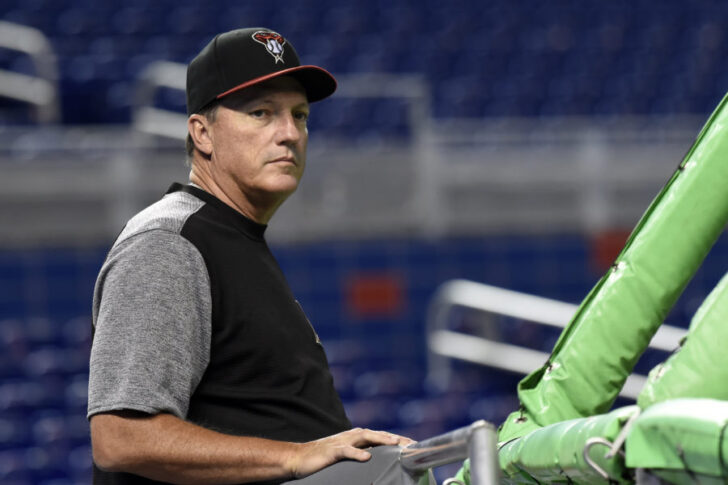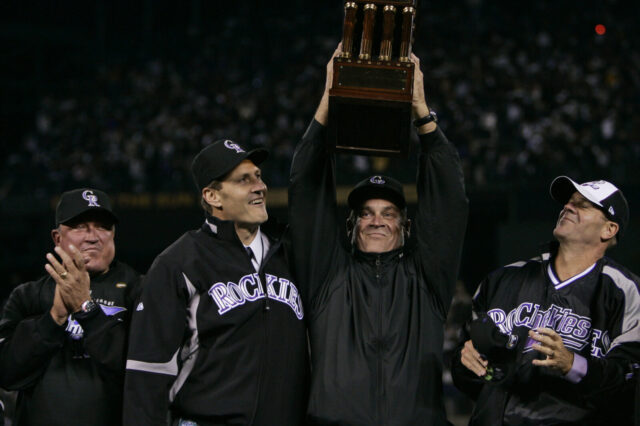If inquired, several Colorado Rockies’ pundits would give a similar answer when asked who the team’s biggest offseason addition was: Daniel Murphy.
With two games completed, a win in each, an alternate answer would be hitting coach Dave Magadan, an acquisition that has paid dividends already.
Flashback to last season. Through the year’s first pair of games against the Arizona Diamondbacks, the team was winless, with their hitting philosophy being mirrored the remainder of the year. With 11.5 strikeouts per game from their offense, the Rockies began their longball-or-bust ways early.
At the year’s conclusion, their postseason berth notwithstanding, the Rockies slashed .256/.308.444. Their team batting average was the worst in franchise history, the on-base percentage at second-worst.
On the road, those numbers dropped to .225/.295/.370. Outside of slugging percentage, those marks would’ve ranked dead-last among all 30 major league clubs.
In the order’s two years under the tutelage of Duane Espy, they also registered the two highest strikeout totals in franchise history.
Those woes came to a head in the postseason as the Rockies scored a total of four runs in four games, going scoreless in two games of a three-game sweep at the hands of the Milwaukee Brewers. Amongst their strife, a total of 43 strikeouts played a large role.
Just like an upgrade at first base was necessary, a newly-minted hitting coach was a priority.
Enter the aforementioned Magadan.
“Really, all you have to do is see what happened in the postseason this past year,” Magadan said in an interview before the year with MLB.com’s Thomas Harding. “The team that ended up winning it all was the team in Boston. You could tell with their at-bats that they were just trying to do what the game was asking them to do on every at-bat.”
Thus far, the Rockies have taken what’s been given to them each at-bat, relying on their focus at the plate to extend each plate appearance, resulting in better pitches to hit. When those pitches have come earlier in the count, the swings have followed.
As a team, the Rockies have shifted from seldom contact, outside of home runs, to consistently putting the ball in play and giving themselves opportunities for oppositions’ miscues.
The results have been 20 hits, 12 runs and only 12 strikeouts in a pair of victories over the Miami Marlins, all while battling a bout of customary early-season rust.
En route to a 6-1 win on Friday, the Rockies showed their offense’s true potential. Despite a lack of success against Trevor Richards and his vicious changeup, the team kept a level head.
Richards rattled off six innings, including a stretch where he retired nine consecutive Rockies’ hitters spanning from the final out of the third inning to the two-out mark of the sixth. With the momentum opposing them, the Rockies rebounded and began to find their groove.
Trevor Story orchestrated an eight-pitch at-bat that spurned a walk, followed by a David Dahl double on a first-pitch changeup. Each hitter took advantage of a separate situation, similar to the way Magadan saw the Red Sox jockey in their World Series run.
In two of the three subsequent innings, the Rockies were able to pad their lead, a four-run ninth inning serving as the apex. In their fruitful concluding frame, the club’s hitters had five hits. Of the five, three came by way of a four-or-more pitch at-bat, the other two within the first two pitches.
The two games’ efforts resulted in 10 separate pitchers toeing the rubber for the Marlins, burning through several relievers and setting themselves up for success in the final two games of the series.
Constant adjustment is keying the Rockies early success on offense, all while in the normally dreadful offensive territory of Marlins Park. Bringing those mindsets back to the friendly confines of Coors Field will likely yield even greater results.
Rattling through relief innings and tallying intelligent at-bats can change the course of the Rockies’ season and improve their profits when the postseason arrives.



